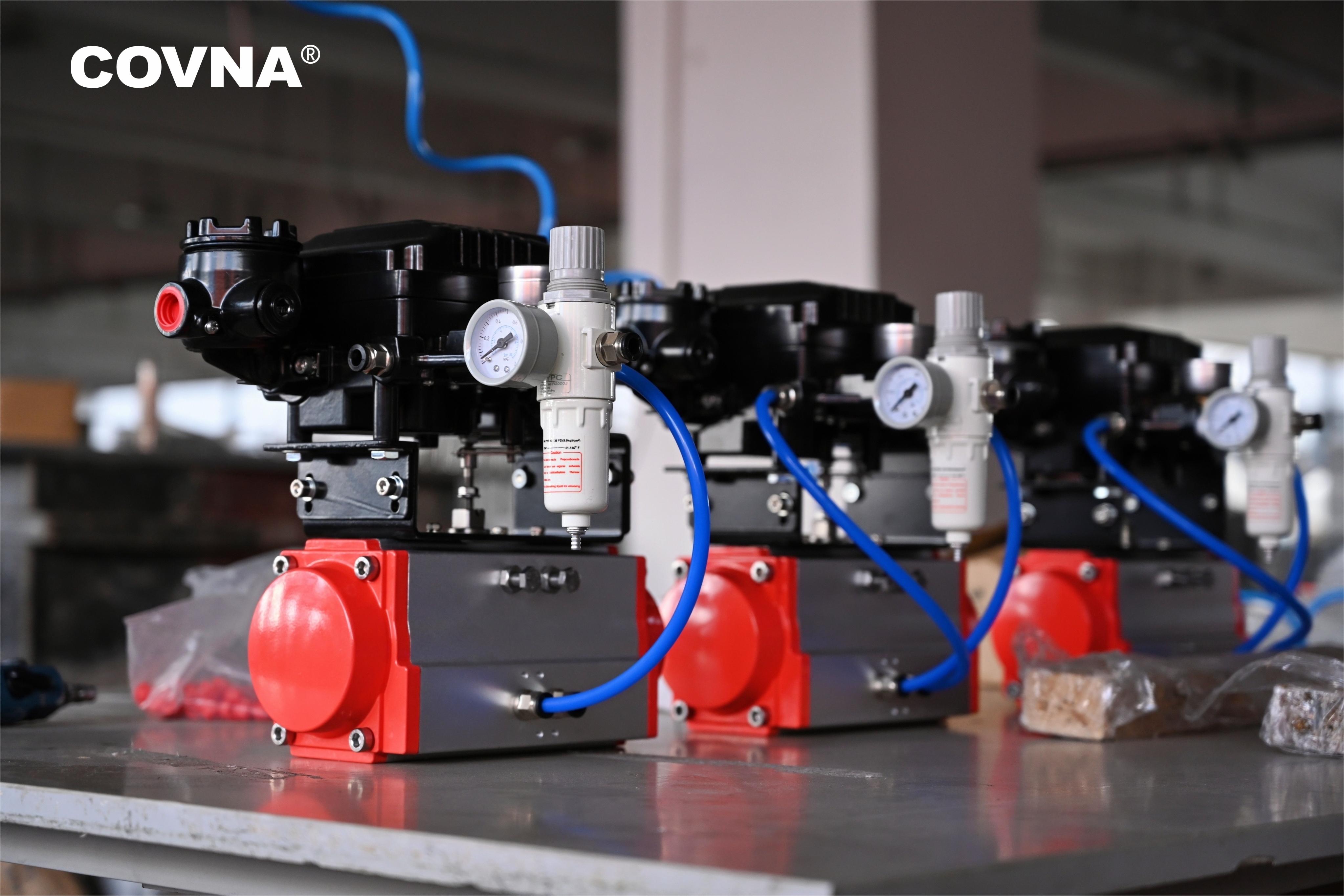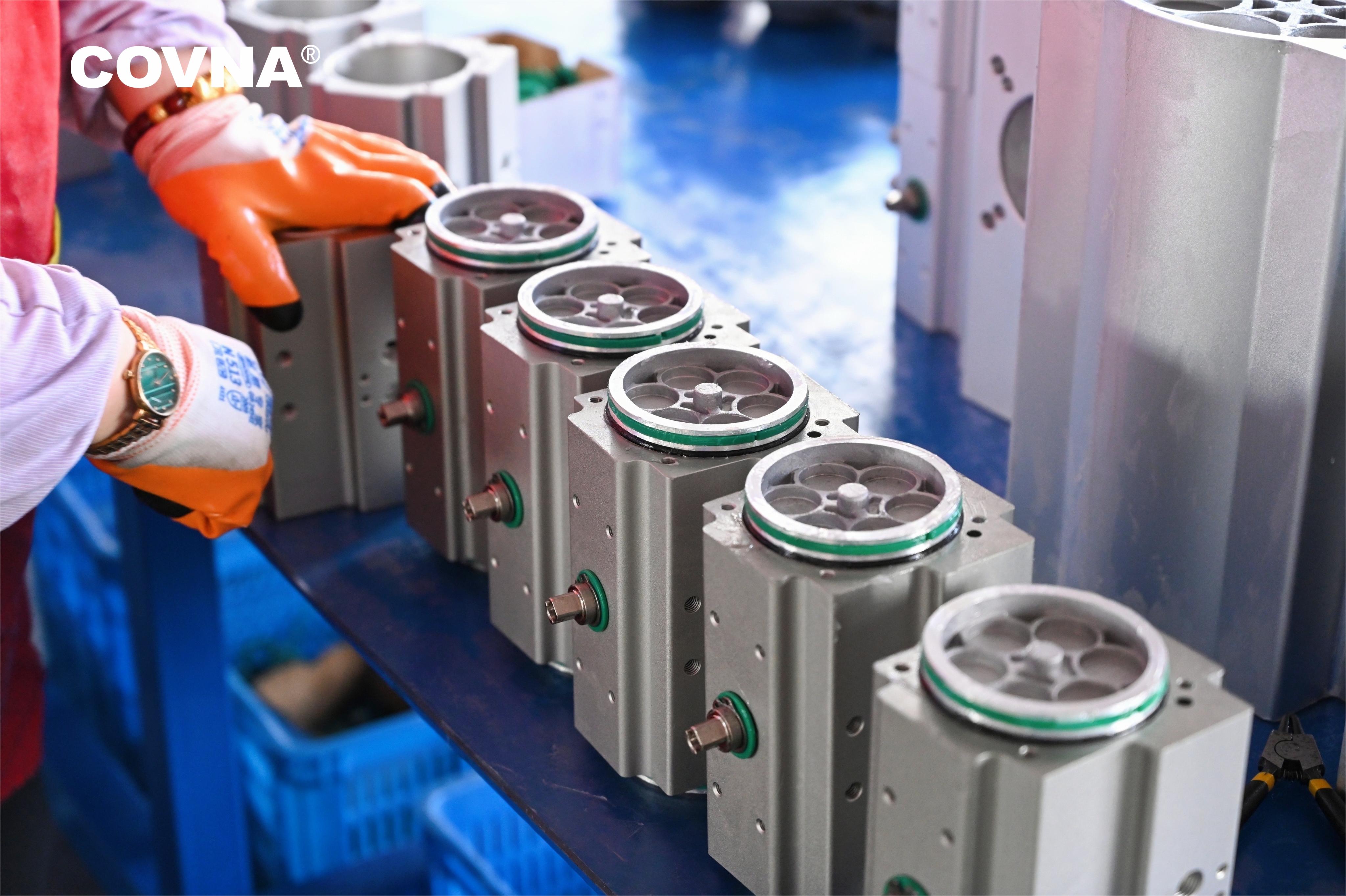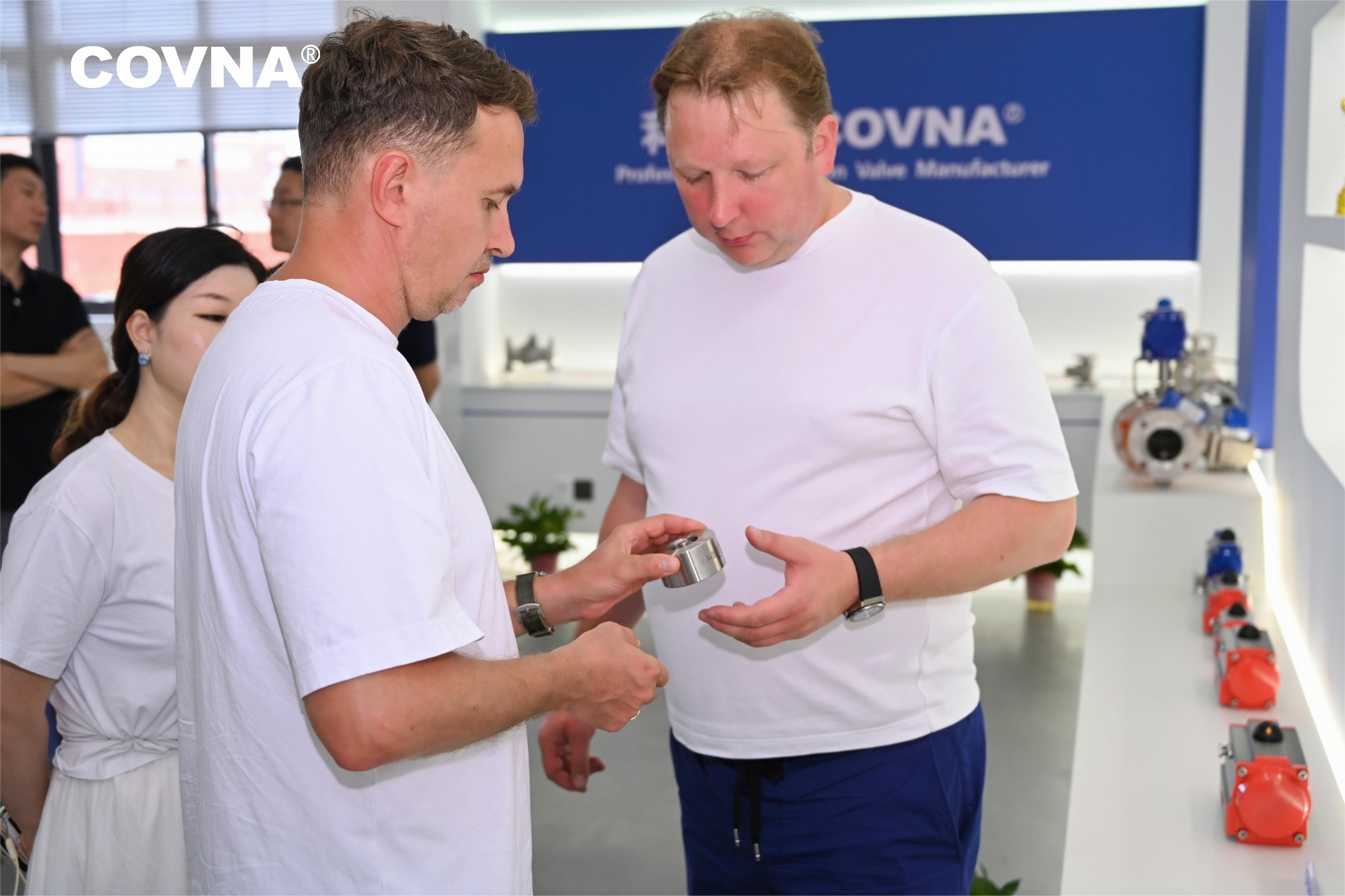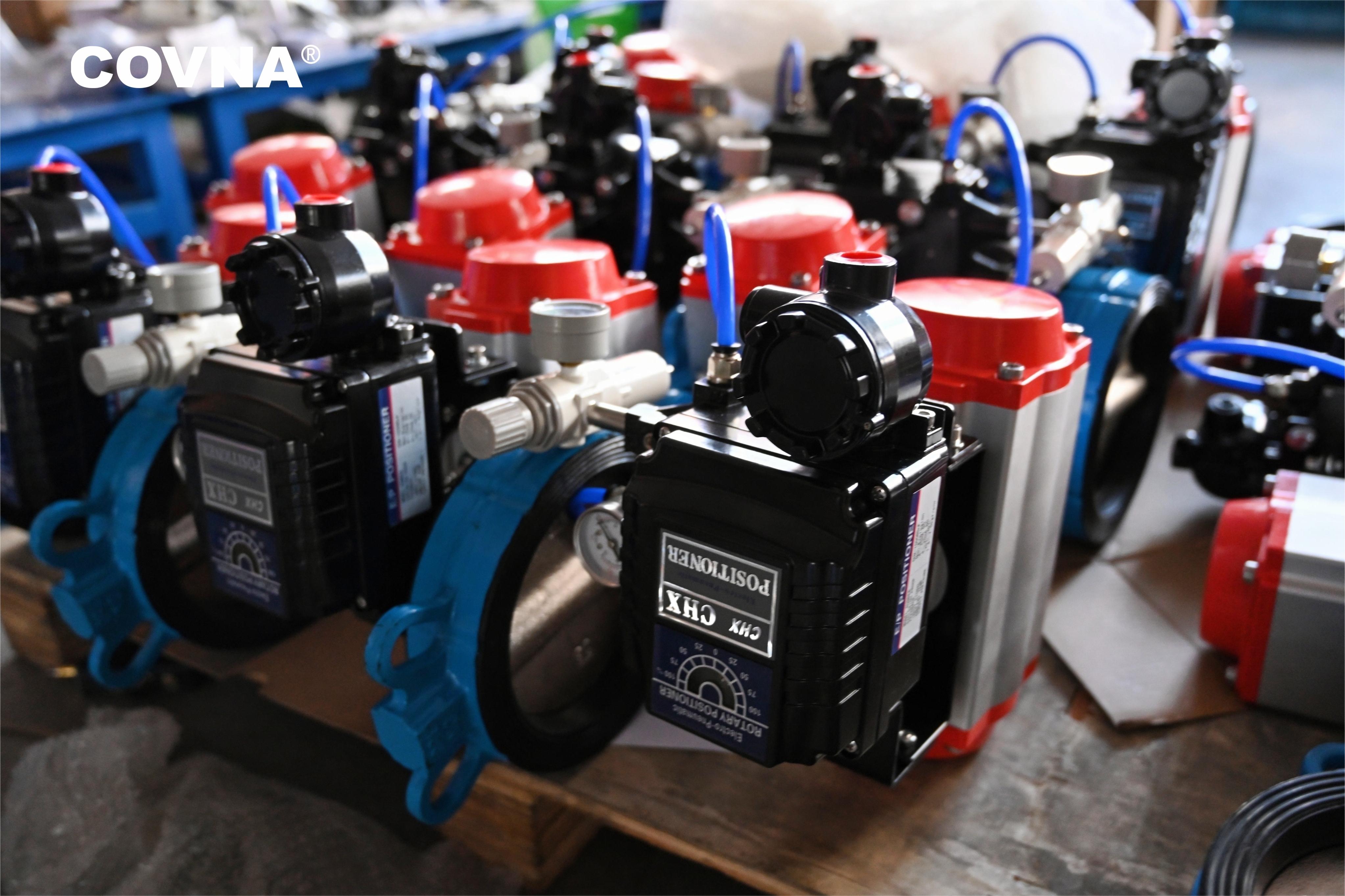Dobbeltvirkende pneumatiske aktuatorerSpil en vigtig rolle i mange industrielle systemer, kontrol af ventiler og andre mekaniske processer med præcision. Som ethvert stykke maskiner kan de dog støde på forskellige problemer over tid. Nedenfor er 10 typiske problemer, du måske står overfor med disse aktuatorer sammen med praktiske løsninger for at holde dine systemer kørende.
1. Luftlækager
- Årsag: slidte sæler, løse fittings eller generelt slid på aktuatoren.
- Virkning: Nedsat effektivitet og langsommere aktuatorydelse, hvilket fører til dårlig systemkontrol.
- Løsning: Kontroller regelmæssigt for slidte sæler, spænd eventuelle løse fittings og udfør rutinemæssig vedligeholdelse.
2. utilstrækkelig luftforsyning
- Årsag: forhindringer i luftlinjerne, kompressorfejl eller trykfald.
- Virkning: Aktuatoren afslutter muligvis ikke sit fulde slagtilfælde, hvilket forårsager uregelmæssige eller ufuldstændige bevægelser.
- Løsning: Kontroller, at luftforsyningen er tilstrækkelig, ryd eventuelle blokeringer, og sørg for, at kompressoren og luftsystemet er velholdt.
3. langsom respons
- Årsag: Forurenet luftforsyning, utilstrækkelig smøring eller intern komponentslitage.
- Virkning: forsinket eller træg aktuatorresponser, kompromitterende systemtiming og nøjagtighed.
- Løsning: Brug ren, tør luft, sørg for korrekt smøring, og inspicér de interne komponenter for tegn på slid.
4. overophedning af problemer
- Årsag: Overdreven cykling, dårlig smøring eller intern friktion.
- Virkning: Overophedning kan få dele til at udvide, hvilket fører til binding, reduceret effektivitet eller skade på tætninger.
- Løsning: Overvåg systemet for overdreven cykling, reducer driftsfrekvensen, hvis det er muligt, og sørg for, at aktuatoren smures tilstrækkeligt.
5. Sticking eller fastklemning
- Årsag: Korrosion, snavs, affald eller beskadigede sæler inde i aktuatoren.
- Virkning: Aktuatoren kan sidde fast eller betjene inkonsekvent og forstyrre hele systemet.
- Løsning: Rengør aktuatoren regelmæssigt, udskift eventuelle beskadigede sæler og overvej at bruge korrosionsbestandige materialer.
6. Overdreven støj
- Årsag: løse dele, forkert installation eller luftturbulens.
- Virkning: Usædvanlige lyde kan signalere mekaniske problemer, der kan føre til mere alvorlig skade, hvis de ignoreres.
- Løsning: Spænd alle komponenter, sørg for korrekt montering, og sørg for, at aktuatoren er korrekt på linje med systemet.
7. Svingning eller "jagt"
- Årsag: Dårlige kontrolsignaler, forkert systemtuning eller slidte dele.
- Virkning: Aktuatoren fungerer muligvis uberegnelig, hvilket fører til ineffektivitet og potentiel systemskade.
-Løsning: Finjon kontrolindstillingerne, kalibrer systemet igen og udskift eventuelle slidte komponenter.
8. Forsegling af forringelse
- Årsag: Høje cykelhastigheder, forkert valg af materiale eller eksponering for barske forhold.
- Virkning: Lækager og reduceret aktuatorydelse, som til sidst kan føre til fiasko.
- Løsning: Vælg sæler, der er passende til dine specifikke driftsbetingelser, og udfør regelmæssige inspektioner for at fange slid tidligt.
9. Korrosionsproblemer
- Årsag: Eksponering for barske miljøer som høj luftfugtighed, kemikalier eller saltvand.
- Virkning: Korrosion kan svække aktuatorkomponenter, hvilket fører til lækager og mekanisk svigt.
- Løsning: Brug korrosionsbestandige materialer og beskyttelsesbelægninger, og inspicér aktuatoren regelmæssigt for tegn på korrosion.
10. Forkert aktuatorstørrelse eller valg
- Årsag: Valg af en aktuator, der'S er ikke korrekt størrelse til applikationen eller valg af den forkerte type.
- Virkning: Aktuatoren giver muligvis ikke tilstrækkelig kraft, hastighed eller slagtilfælde, hvilket fører til ineffektivitet eller fiasko.
- Løsning: Sørg for, at aktuatoren er korrekt størrelse og valgt i designfasen under hensyntagen til alle operationelle krav.
Konklusion
Ved at forstå disse almindelige problemer og hvordan du adresserer dem, kan du sikre dig, at dine dobbeltvirkende pneumatiske aktuatorer udfører pålideligt. Regelmæssig vedligeholdelse og omhyggelig opmærksomhed på detaljer under udvælgelses- og installationsprocessen kan forhindre mange af disse problemer, hvilket holder dine industrielle systemer i gang med højeste effektivitet.
Posttid: SEP-03-2024







